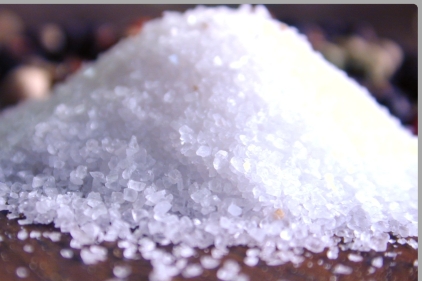"We found sodium levels, on average, in regular and diabetic patient menus were almost two-times higher than recommended levels," dietician Arcand told heartwire. The results came as a surprise; she said, "It's generally trusted that the food provided to patients is in concordance with healthy eating guidelines. We suspected sodium levels would be high, but not as high as what we observed."
We suspected sodium levels would be high, but not as high as what we observed.
The findings reflect the fact that hospitals are increasingly relying on prepared and processed foods, rather than fresh ingredients, she notes. "The levels of sodium we see in hospital menus are on par with the levels we are consuming in a free-living population." Changes need to be made to food procurement and menu-planning policies to lower sodium levels in hospital patient menus, she says.
In an accompanying editor's correspondence, Dr Kirsten Bibbins-Domingo (University of California) says this "important" Canadian research adds to "the growing evidence of unhealthy food environments in our healthcare institutions and serves as a reminder of how far our healthcare institutions still need to go." A "long and varied" list of concerns -- including high sugar and fat content of foods, excessive portion sizes for pediatric patients, fast-food restaurants on hospital premises, and widespread reliance on vending machines after hours -- "affects not only our patients, but also hospital personnel," she notes.
There are only a few publications that describe the sodium content of hospital patient menus and whether they fall within recommended guidelines, and they only assessed a single type of menu at a single center, Arcand and colleagues note. Nevertheless the studies indicate that health institutions are increasingly serving foods containing salt in excess of advised levels.
In their study, Arcand et al evaluated the sodium content of several types of patient menus at three acute-care hospitals in Ontario (n=1,935 beds) between November 2010 and August 2011. Menus primarily came from general medical (27%), surgical (24%) and cardiology (20%) wards. The researchers note that they chose to assess the sodium content of menus and that actual sodium consumption varies depending on food intake.
They found that 86% of regular and 100% of diabetic standard-unselected menus (whereby patients received a set menu) exceeded the tolerable upper level (UL) of sodium of 2300mg/day, and 100% of both menus exceeded the adequate intake (AI) level of 1500mg/day.
Mean sodium level in standard-unselected regular menus was 2896 mg/day; and in standard-unselected diabetic menus sodium level was even higher, at 3406mg/day.
When patients self-selected their food, 97% of regular menus exceeded the AI, and 79% exceeded the UL of sodium. For patient-selected diabetic menus, these percentages were 99% and 95%, respectively.
Researchers found similar levels of sodium in menus across all three hospitals examined.
Even menus for those patients on two sodium-restricted diets (3000 and 2000mg/day) fell short of expectations, say Arcand and colleagues. Approximately half of all 2000mg sodium-restricted menus exceeded the prescribed level when patients self-selected their food.
Patients on salt-restricted diets are typically those with decompensated heart failure or kidney disease, who are sensitive to acute excessive levels of sodium, Arcand notes, so these particular results could have important clinical implications.
Bibbins-Domingo agrees, stating that this finding "underscores the potential for inpatient food service to contribute to the exacerbation or slow resolution of the very conditions that may have led to the hospitalization."
Arcand says that although most hospitals have highly qualified dieticians who are on menu-planning teams and "and knowledgeable about the needs of hospital patients in relation to their nutrition care," there is still clearly much work to be done.
The food industry needs to step up and lower sodium levels in the foods they are producing for hospitals.
She and her team provided feedback to the institutions they studied. "The hospitals that did participate are now evaluating their sodium levels in the foods, and they are starting to take action."
She believes three things need to happen to improve this situation: "governments need to develop food procurement policies and nutrition standards for the foods that are served at hospitals, including developing criteria for maximum levels of sodium. Hospitals need to participate in implementing these standards when creating recipes, building menus, ordering food, and entering into contracts with food suppliers. Finally and importantly, the food industry needs to step up and lower sodium levels in the foods they are producing for hospitals."
